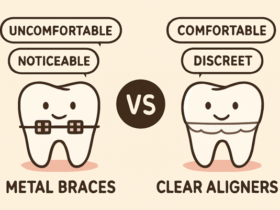Most people don’t expect to find themselves in the court system, especially facing charges related to domestic violence. It can be overwhelming, confusing, and deeply personal. But if you’re here, you’re likely trying to understand your options and take steps toward making things right.
One option the court may offer is a domestic violence diversion program. This isn’t just about avoiding jail time—it’s about learning, accountability, and change. If accepted into one of these programs, you’ll likely need to complete counseling, education sessions, and follow strict rules. But in return, you may have a chance to reduce or dismiss the charges.
In this guide, we’ll walk you through the enrollment process step by step. We’ll cover how to qualify, what the courts typically require, what to expect from the program itself, and what happens when you finish. Whether you’re here for yourself or helping someone else, this guide will help you navigate what comes next with clarity and confidence.
Who Qualifies for a Diversion Program?
Not everyone charged with domestic violence is eligible for a diversion program. These programs are typically available to first-time offenders or those facing misdemeanor charges. The court looks closely at the circumstances of the case, including whether there was any physical injury, the defendant’s criminal history, and whether the victim agrees to the arrangement.
Each state sets its own rules. For example, in California, Penal Code § 1001.95 allows judges discretion to offer diversion for certain misdemeanor charges—domestic battery included—provided the case meets specific conditions. But in other places, any violence that caused injury may make someone ineligible, even if it’s their first offense.
General eligibility factors include:
- No prior domestic violence convictions
- Misdemeanor-level offense
- No restraining order violations
- Willingness to comply with all program requirements
Check with a local attorney or court representative to confirm eligibility in your area.
How the Enrollment Process Works
Once the court determines you’re eligible, the enrollment process usually begins quickly, often at or shortly after the arraignment. Here’s a general breakdown of how it unfolds:
Step 1: Court Referral
The judge must agree to offer diversion. This often comes as part of a plea deal, or in some cases, the court may offer it on its own initiative. If you’re working with a public defender or private attorney, they’ll help present your case and argue for diversion as an alternative to trial.
Step 2: Evaluation and Intake
Once the court refers you to a program, the next step is the intake process. You’ll usually need to attend an assessment meeting, where a counselor or program coordinator evaluates your background and determines the level of intervention needed. They may ask about past relationships, substance use, mental health history, and other personal matters.
Step 3: Program Agreement
If accepted, you’ll sign a formal agreement. This document outlines the program rules, attendance requirements, fees, and duration. Failing to comply with this agreement can lead to termination from the program and reinstatement of the criminal charges.
What the Program Involves
Most diversion programs are educational and therapeutic, not punitive. They focus on addressing the root causes of violent behavior, such as poor emotional regulation, unresolved trauma, or toxic relationship patterns.
While the exact structure varies, here’s what many programs include:
- Weekly group counseling sessions, often lasting 1–2 hours
- Individual therapy, depending on the provider
- Anger management and conflict resolution training
- Substance abuse counseling, if relevant
- Random drug or alcohol testing, in some cases
- Check-ins with probation or case managers
Programs usually last between 26 and 52 weeks, depending on state law and the nature of the offense. You’ll need to complete every requirement without incident to be considered for successful completion.
What Happens After You Complete the Program
Finishing the program is a major step forward, but it doesn’t always mean your record disappears overnight. If the court structured your case as a pretrial diversion, the charges may be dismissed once you complete the program. In some jurisdictions, you may need to return to court for a final hearing where the judge confirms your completion and clears the case.
Keep in mind:
- You may be eligible to seal or expunge the record later, depending on your state’s laws
- Even after successful completion, any new offense could trigger consequences from the original charge
- Some employers or agencies may still see the arrest, even if the case was dismissed
Always ask your attorney about how your record will be affected—and what steps you can take to protect your future.
Final Thoughts
Going through the criminal justice system for something as serious as domestic violence can be a turning point. Diversion programs are not easy, but they offer something most court processes don’t: the opportunity to reflect, learn, and walk away without a conviction. While laws and procedures differ from one state to the next, the basic goal is the same—helping people take responsibility and build healthier lives moving forward.







